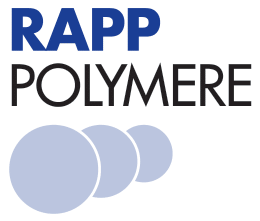ɑ-Hydroxy-ω-Boc Amino PEG
ɑ-Hydroxy-ω-Boc Amine PEG
€ 236,00*
1310000-00-21.500MG
Product information
PEG crosslinkers with Boc (tert-butyloxycarbonyl)-protected amino groups on one chain end. The Boc protecting group is stable in a wide range of conditions (including highly basic environments) but may be easily removed by (strong) acids such as TFA or at low pH in water to release the primary amine. The amine functional group at one end of the PEG linker molecule allows for selective and covalent attachment to other molecules with complementary functional groups, such as carboxylic acids or activated esters, aldehydes and epoxides. The newly formed bonds are amides, imines or secondary amines. Applicable for reversible or permanent crosslinking with PEG. The hydroxy group on one side of this PEG crosslinker is able to undergo esterification reactions with acids for reversible pegylation. It also enables further derivatization or replacement with other reactive functional groups.
Literature
L 104 α-Hydroxy-ω-Boc-Amino PEGs
- Westenhoff, S.; Kotov, N. A. Quantum Dot on a Rope. J. Am. Chem. Soc. 2002, 124 (11), 2448-2449. doi: 10.1021/ja0173728
- Tsai, H.-C.; Chang, W.-H.; Lo, C.-L.; Tsai, C.-H.; Chang, C.-H.; Ou, T.-W.; Yen, T.-C.; Hsiue, G.-H. Graft and Diblock Copolymer Multifunctional Micelles for Cancer Chemotherapy and Imaging. Biomaterials 2010, 31 (8), 2293-2301. doi: 10.1016/j.biomaterials.2009.11.059
- Ma, P.; Liu, S.; Huang, Y.; Chen, X.; Zhang, L.; Jing, X. Lactose Mediated Liver-Targeting Effect Observed by Ex Vivo Imaging Technology. Biomaterials 2010, 31 (9), 2646-2654. doi: 10.1016/j.biomaterials.2009.12.019
- Chen, Y.-C.; Liao, L.-C.; Lu, P.-L.; Lo, C.-L.; Tsai, H.-C.; Huang, C.-Y.; Wei, K.-C.; Yen, T.-C.; Hsiue, G.-H. The Accumulation of Dual PH and Temperature Responsive Micelles in Tumors. Biomaterials 2012, 33 (18), 4576-4588. doi: 10.1016/j.biomaterials.2012.02.059
- Lu, P.-L.; Chen, Y.-C.; Ou, T.-W.; Chen, H.-H.; Tsai, H.-C.; Wen, C.-J.; Lo, C.-L.; Wey, S.-P.; Lin, K.-J.; Yen, T.-C.; Hsiue, G.-H. Multifunctional Hollow Nanoparticles Based on Graft-Diblock Copolymers for Doxorubicin Delivery. Biomaterials 2011, 32 (8), 2213-2221. doi: 10.1016/j.biomaterials.2010.11.051
- Jia, Z.; Liu, J.; Boyer, C.; Davis, T. P.; Bulmus, V. Functional Disulfide-Stabilized Polymer-Protein Particles. Biomacromolecules 2009, 10 (12), 3253-3258. doi: 10.1021/bm900817a
- Liu, X.; Formanek, P.; Voit, B.; Appelhans, D. Functional Cellular Mimics for the Spatiotemporal Control of Multiple Enzymatic Cascade Reactions. Angew. Chem. Int. Ed Engl. 2017, 56 (51), 16233-16238. doi: 10.1002/anie.201708826
- Colombo, M.; Mazzucchelli, S.; Montenegro, J. M.; Galbiati, E.; Corsi, F.; Parak, W. J.; Prosperi, D. Protein Oriented Ligation on Nanoparticles Exploiting O6-Alkylguanine-DNA Transferase (SNAP) Genetically Encoded Fusion. Small 2012, 8 (10), 1492-1497. doi: 10.1002/smll.201102284
- Gao, H.; Cheng, T.; Liu, J.; Liu, J.; Yang, C.; Chu, L.; Zhang, Y.; Ma, R.; Shi, L. Self-Regulated Multifunctional Collaboration of Targeted Nanocarriers for Enhanced Tumor Therapy. Biomacromolecules 2014, 15 (10), 3634-3642. doi: 10.1021/bm5009348

